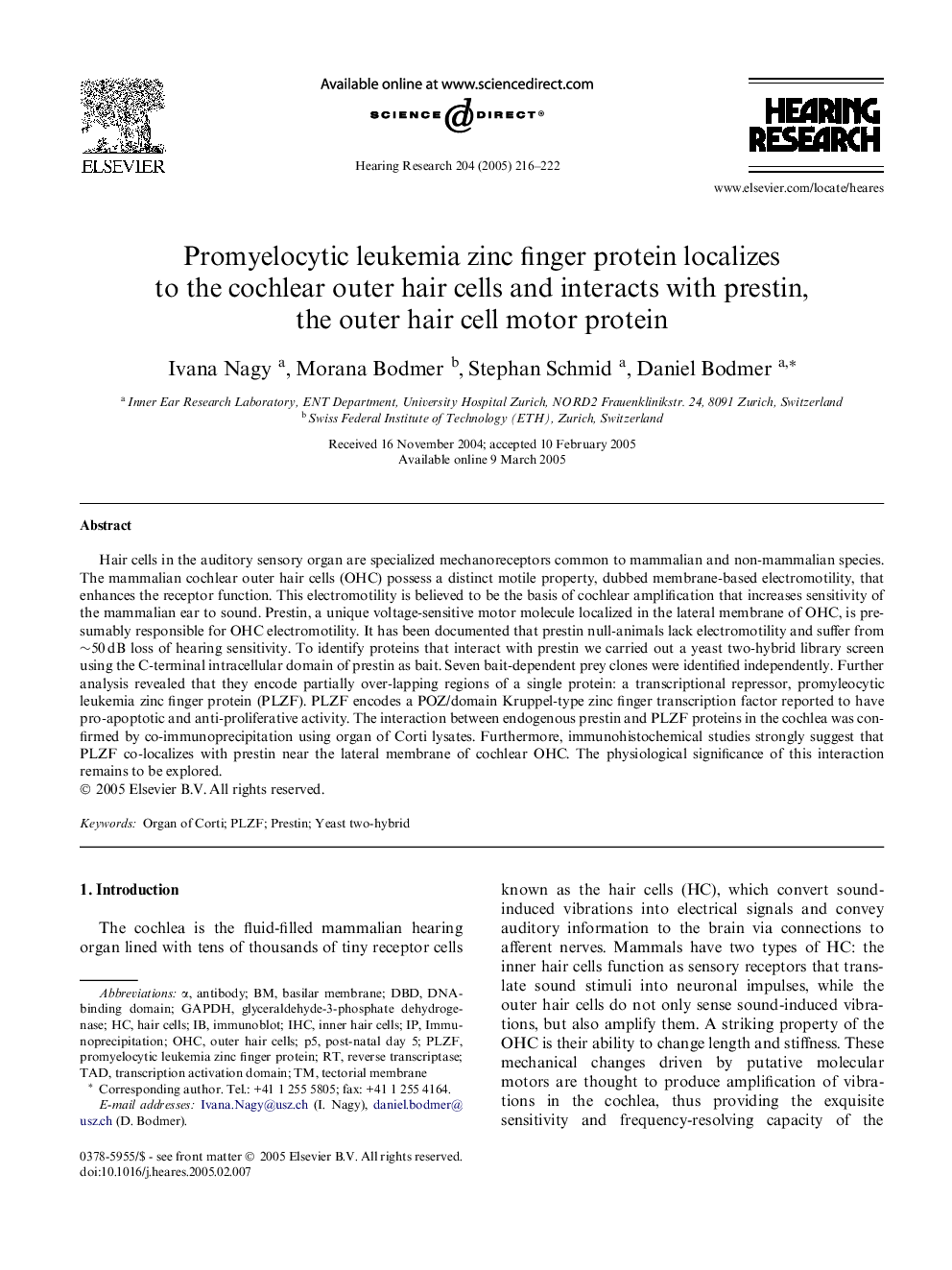| Article ID | Journal | Published Year | Pages | File Type |
|---|---|---|---|---|
| 9436540 | Hearing Research | 2005 | 7 Pages |
Abstract
Hair cells in the auditory sensory organ are specialized mechanoreceptors common to mammalian and non-mammalian species. The mammalian cochlear outer hair cells (OHC) possess a distinct motile property, dubbed membrane-based electromotility, that enhances the receptor function. This electromotility is believed to be the basis of cochlear amplification that increases sensitivity of the mammalian ear to sound. Prestin, a unique voltage-sensitive motor molecule localized in the lateral membrane of OHC, is presumably responsible for OHC electromotility. It has been documented that prestin null-animals lack electromotility and suffer from â¼50Â dB loss of hearing sensitivity. To identify proteins that interact with prestin we carried out a yeast two-hybrid library screen using the C-terminal intracellular domain of prestin as bait. Seven bait-dependent prey clones were identified independently. Further analysis revealed that they encode partially over-lapping regions of a single protein: a transcriptional repressor, promyleocytic leukemia zinc finger protein (PLZF). PLZF encodes a POZ/domain Kruppel-type zinc finger transcription factor reported to have pro-apoptotic and anti-proliferative activity. The interaction between endogenous prestin and PLZF proteins in the cochlea was confirmed by co-immunoprecipitation using organ of Corti lysates. Furthermore, immunohistochemical studies strongly suggest that PLZF co-localizes with prestin near the lateral membrane of cochlear OHC. The physiological significance of this interaction remains to be explored.
Keywords
Related Topics
Life Sciences
Neuroscience
Sensory Systems
Authors
Ivana Nagy, Morana Bodmer, Stephan Schmid, Daniel Bodmer,
